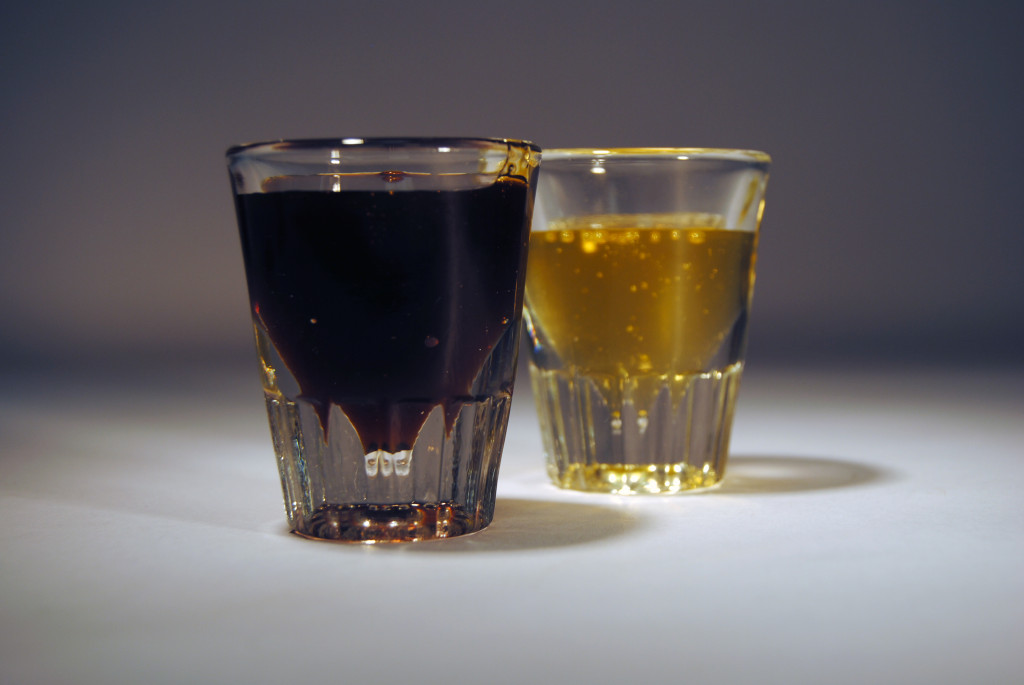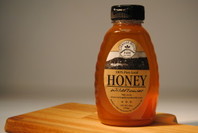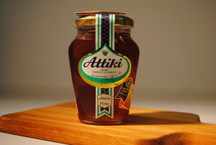
The Foodie Press: How Sweet It Is… An Unexpected Honey Adventure
Back to feed- Posted: 9/2/2016
- Categories: Discoveries at the Jungle
As both a major and minor component of countless dishes and drinks, honey may seem to some as an easily used, yet just as easily ignored ingredient. We’re of the mind that it shouldn’t be so readily taken for granted.
While it’s simplicity is one of its most alluring qualities, the varieties of this rich, earthy item found at Jungle Jim’s offers complex variations on a theme, ranging from light amber in color and mild in flavor, to a deep brown with a bold taste. We wanted to explore some of the lesser known honeys available not just in our grocery and Natural Foods sections, but the international offerings found throughout the store, as well. More than anything, we wanted to take some time to learn about where they come from and what makes them so unique.
Honey varieties, much like wine, can vary in color and flavor from year to year. Depending on when the flowers blossom and the location of the crop itself, honey can change in color and flavor each year. While many of its qualities will be the same, variations in weather, blossoming season, and region can imbue the same types of honey with subtly different characteristics.
Did you ever wonder why some honey is quick to “crystallize,” while others seem to stay “fresh” for much longer? Simply put, it’s chemistry! Obviously, honey is sweet, and that sweetness is because of the presence of sugars – fructose and glucose, specifically. The higher the amount of fructose compared to glucose, the faster your honey will crystallize, or start to solidify. Common household honey, like Clover, crystallizes quickly, while some more exotic or lesser known varieties like Tupelo take their time. Still others, like Acacia, don’t crystallize at all!
Yes, there are honeys that come from berry bushes, but alas, they won’t taste like those berries. Okay, maybe they will a little bit. Varieties like Blueberry and Raspberry will have hints of their namesake, but don’t expect them to taste exactly like blueberries or raspberries. They’ll maintain the essence of their origin, though. So remember, if you’re purchasing honey that claims a strong berry or fruit flavor, you’re likely picking up a honey that’s getting some additional help in the flavor department. Be sure to check the label if you’re unsure of whether or not flavor has been added. In most cases, it’s clearly indicated.
Despite popular belief, eating locally harvested honey probably won’t help you deal with allergies. While it would be wonderful if this weren’t the case – because it’s widely agreed upon that seasonal allergies are among the most frustrating things to deal with – using locally harvested and produced honey, even in it’s raw form, likely won’t help with preventing or alleviating allergies (unless you have a sore throat). There’s just no strong scientific data to prove it. That being said, anecdotal evidence suggests that some do see a lessening of symptoms when they utilize locally harvested honey (and pollen). The idea is that you help to train your body to recognize that particular variety as “friendly,” instead of “invading.” It’s a homeopathic remedy, to be sure, that’s meant to help lessen the body’s response by giving it small doses it can control. Whether or not it works, though, is something we can’t say for certain.
As we’ve already mentioned, honey comes in a surprisingly wide variety of flavor profiles, colors, and forms. From common Clover honey to more challenging varieties like Buckwheat, to honey-based mixed drinks and honey candy, there’s something for every palette and every occasion, from all over the world.
The Exploration Begins…
With so many types of honey available, it was hard not to go a little overboard as we scoured the aisles of the International department. From Germany, to Greece, to Turkey, we were thrilled to find so many variations of the pure honey experience ready and waiting to be checked out.
First, though, we made our way to the, shall we say, large table of honeys located near the Natural Food department, as well as Natural Food department itself, and we admit that it was almost overwhelming (though in the best way possible). To start, we decided to take a look at a few different American varieties:
Our experience: This honey is sweet, obviously, but there’s an underlying tanginess that only this particular honey exhibited. It was surprising, to the say the least, but made this a much more unique variety than we anticipated. It’s not something you notice right away, but after a few seconds, the sweetness gives way to a flavor that is unexpected and a little challenging. It’s a honey that lets you know exactly where it comes from – the fields – and is great if you want an uncommon, but natural astringency to cut through some of the sweetness.
Our experience: Wildflower is an easy honey to enjoy, and this particular brand and variety is no different. It’s a little stronger than some of the more run of the mill clover and orange blossom honeys available, with just enough personality to make it worth finding and using regularly. Smooth, sweet, with just enough richness, it’s a great honey for anything you might need to use honey for.
Our experience: Some of us have tried buckwheat honey, so knew what to expect. The ones that had no experience with it realized quickly just how potent – and endearing – this variety can be. It’s rich, complex, sweet but not overly so, and just a little bit on the “wow, that’s weird” side of things. It has a deep flavor with a malty finish. One of our team said it reminded them of certain aspects of homebrewing, something that was near and dear to their heart. So, like we said, this is a surprisingly endearing honey.
Our experience: The short version: we loved this one. The longer version: This is a truly unique honey. Creamy, rich, and savory, this is a variety that immediately let us know it was very much it’s own thing. What it lacked in overall sweetness, it more than made up for in all-around flavor. Since it was thicker than the others we tried – it has a paste-like consistency, but wasn’t overly sticky – the flavor actually didn’t linger. Which, we admit, was disappointing. It really was that tasty. We were simply enamored of this one.
Our experience: There is a lot happening with this honey – it’s flavor is sweet and aromatic, with the thyme coming through at the end. Oddly enough, after trying what we think of as “single origin” honeys (or, honeys that come from only one type of flower or source), this one is recognizably different – the distinctive taste was quite difficult to pin down, which we’re sure is just the nature of this particular variety. It’s definitely one of more mysterious honeys we tried.
Our experience: After getting over the admittedly tiny hurdle of trying honey made from bug excretions, we found this one to be just as enjoyable as most of the honeys we’ve tried before. The only noticeable difference – aside from the flavor, which did have a pine essence – was that it was a little on the thin side. It didn’t have the deep, ongoing flavor that most honeys exhibit. There was a hefty dose of flavor to start, but it faded quickly. We’re not sure if that’s a byproduct of how it’s made, but it was an interesting aspect of a relatively unknown variety of honey.













